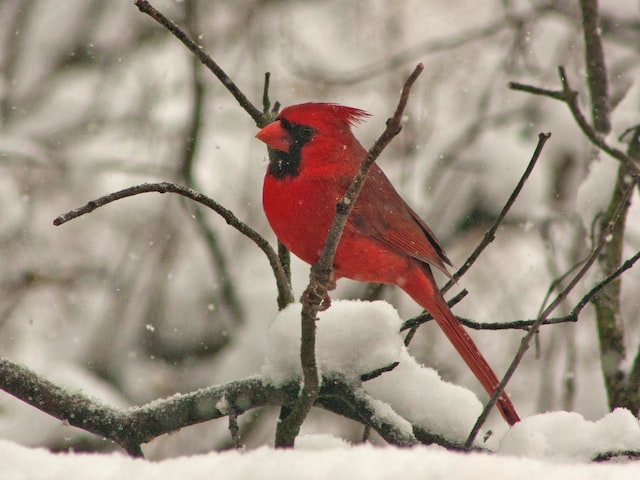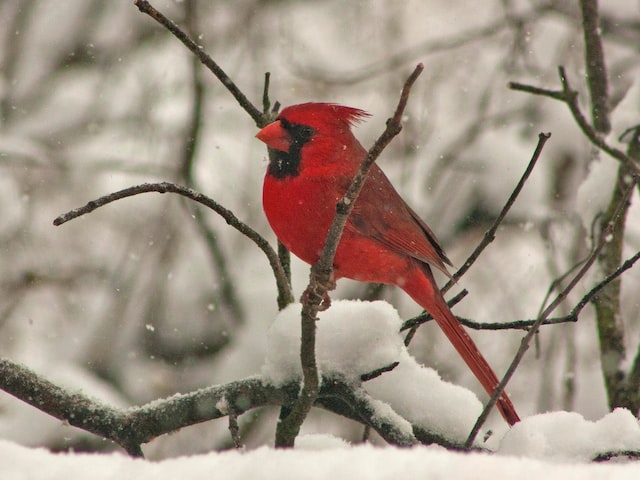What Do Carduelids Eat?

Carduelids, commonly known as finches or cardueline finches, are a diverse group of small passerine birds that are found in various parts of the world. They are known for their beautiful colors, melodious songs, and lively nature. If you are a bird enthusiast or have carduelids as pets, you may be interested to know what they eat and how to provide them with a nutritious diet. In this blog post, we will explore the dietary preferences of carduelids and provide you with tips on how to optimize their nutrition.
Introduction: The Varied Diet of Carduelids
Carduelids have a varied diet that consists mainly of seeds, but they are also known to consume insects and fruits. They have a specialized bill that allows them to crack open seeds and extract the nutritious contents. The availability of food sources may vary depending on the geographical location and season. Understanding the dietary requirements of carduelids is crucial to their overall health and well-being.
Body: Exploring the Feeding Habits of Carduelids
1. Seeds: A Staple in the Diet of Carduelids
Carduelids have a particular affinity for seeds, which make up a significant portion of their diet. Different species within the carduelid family may have specific preferences for certain types of seeds. Some common seeds that carduelids consume include:
-
Thistle Seeds: Carduelids, such as goldfinches, siskins, and redpolls, are particularly fond of thistle seeds. These seeds are rich in oils and provide important nutrients, making them an ideal choice for feeding carduelids.
-
Grass Seeds: Many carduelids, including certain species of finches, enjoy feeding on grass seeds. Providing a diverse range of grass seeds in their diet can help mimic their natural feeding habits.
2. Insects: A Protein-Rich Addition to the Diet
While seeds form the bulk of their diet, carduelids also consume insects as a source of protein. Insects provide essential nutrients that are vital for their growth and development. Natural sources of insects, such as small flies, caterpillars, and beetles, can be included in the diet of carduelids to provide them with a balanced meal.
3. Fruits: A Treat for Carduelids
Certain carduelids, such as bullfinches and crossbills, have been observed consuming fruits. Providing a variety of fresh fruits, such as apples, berries, and cherries, as occasional treats can be a delightful addition to their diet. Fruits not only offer nutritional benefits but also provide enrichment and stimulation for carduelids.
Conclusion: Optimize the Diet for Your Carduelids

Carduelids have unique feeding preferences, and understanding their dietary requirements is essential for their optimal health. To provide a well-rounded diet for your carduelids, consider the following tips:
-
Offer a Variety of Seeds: Different carduelids have specific preferences for seeds. Providing a mix of thistle seeds, grass seeds, and other seed varieties can ensure a balanced diet.
-
Include Insects: Including a small portion of insects in the diet of carduelids can add valuable protein. You can provide live or freeze-dried insects from specialized pet stores or even cultivate them at home.
-
Fresh Fruits as Treats: While seeds are the primary food source, occasional treats of fresh fruits can add variety and enrichment to the diet of carduelids.
-
Fresh Water and Clean Feeders: Ensure carduelids have access to fresh, clean water at all times. Regularly clean the feeders to prevent the growth of bacteria or mold.
By providing a diverse and nutritious diet, you can support the overall health and well-being of your carduelids. Consult with avian experts or do further research to learn about the specific dietary needs of the carduelid species you’re caring for.
Watch this informative video on carduelid diet:
Now that you have a better understanding of what carduelids eat, you can ensure that their dietary needs are met. Taking care of their nutrition will not only keep them healthy but also enhance their vibrant colors and melodious songs. Start experimenting with different seeds, insects, and fruits to provide a well-balanced and enticing diet for your feathered friends.
Remember, a happy and well-fed carduelid is a joy to behold!
*Note: This blog post is for informational purposes and should not replace personalized advice from a qualified avian expert or veterinarian.
Leave a Reply